Exploring the Mysteries of Xiongjiazhong Tomb Site: A Journey Through Ancient China

An Essential Guide to Visiting Xiongjiazhong Tomb Site
In This Guide
- An Essential Guide to Visiting Xiongjiazhong Tomb Site
- The Rich History and Legends of Xiongjiazhong Tomb Site
- Main Highlights: What You Absolutely Can’t Miss
- Planning Your Visit: A Practical Guide
- Tickets: Prices, Booking, and Tips
- How to Get There: A Complete Transportation Guide
- Local Cuisine and Accommodation Nearby
- Frequently Asked Questions
- Final Thoughts on Your Trip
When embarking on a journey through the annals of Chinese history, few destinations can rival the allure of the Xiongjiazhong Tomb Site (熊家冢墓地). Nestled within the tranquil landscapes of Jingzhou, Hubei Province, this ancient site offers an extraordinary glimpse into the rich cultural tapestry of the Chu State, one of the most influential kingdoms during the Eastern Zhou Dynasty.
Visiting the Xiongjiazhong Tomb Site is not merely an exploration of burial grounds; it is an opportunity to connect with an era marked by remarkable artistry and social hierarchy. The site itself is a testament to the grandeur of the Chu aristocracy, exhibiting an impressive scale and sophistication that reflects the region’s cultural zenith during the Spring and Autumn and Warring States periods.
Highlights of the Visit
As you traverse the grounds, you will encounter a series of meticulously preserved tombs, each a silent witness to the lives and rituals of those who once ruled this land. The Xiongjiazhong Relic Site Museum, established in situ for the conservation of these tombs, serves as your gateway to understanding the historical significance of this elite burial site.
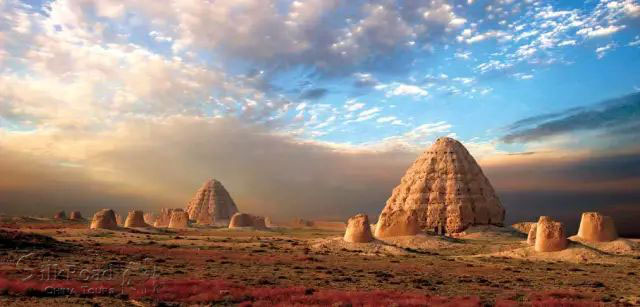
Xiongjiazhong Tomb Site.
Noteworthy Features:
- Cultural Richness: The tombs are adorned with exquisite artifacts, including intricate bronze items, silk fabrics, and pottery, all echoing the high level of craftsmanship that characterized the Chu culture.
- Historical Significance: The saying, “There is Xiongjiazhong in the south,” encapsulates the site’s importance as a burial ground for high-ranking officials, shedding light on the political and social structure of ancient China.
- Museum Insights: The museum houses numerous relics unearthed from the site, providing context and depth to your visit. From bronze wares to bamboo slips, each artifact tells a story of a civilization that flourished over two millennia ago.
Practical Information
For those keen to immerse themselves in this historical treasure, a visit to the Xiongjiazhong Tomb Site typically requires 2-3 hours to fully appreciate the exhibits and the surrounding area. The museum operates daily, with standard hours from 8:30 AM to 5:00 PM (extended to 5:30 PM during daylight saving time).
Getting There
Conveniently located just 45 kilometers from the ancient city of Jingzhou, the site is easily accessible via local transportation. Visitors can take various bus routes leading to the museum, ensuring a hassle-free journey to this enchanting historical landmark.
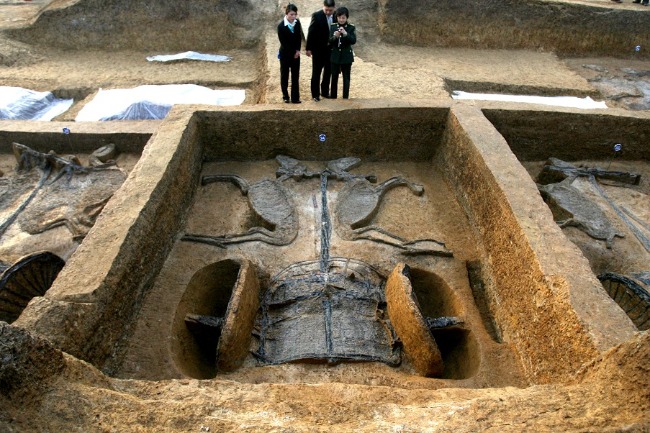
Xiongjiazhong Tomb Site.
In conclusion, the Xiongjiazhong Tomb Site is a must-visit for international travelers with a passion for history and culture. Its combination of stunning artifacts, rich narratives, and the serene beauty of the Hubei province make it an unforgettable stop on your exploration of China’s remarkable heritage.
The Rich History and Legends of Xiongjiazhong Tomb Site
The Xiongjiazhong Tomb Site, a UNESCO-listed archaeological treasure nestled in the heart of Hubei province, is a portal into the rich tapestry of ancient Chinese civilization. This site not only showcases the grandeur of the Chu State during the Eastern Zhou Dynasty but also weaves together legends and historical narratives that echo through the ages.
A Glimpse into the Past
Dating back over 2,500 years, the Xiongjiazhong Tomb Site is one of the most significant aristocratic cemeteries from the Spring and Autumn Period and the Warring States Period. It is located near the ancient capital of Chu, Jinancheng, approximately 45 kilometers from the city of Jingzhou. The tombs here belonged to high-ranking officials and aristocrats, revealing the social hierarchy and cultural practices of the time.

Xiongjiazhong Tomb Site.
The site is renowned for its vast array of burial artifacts, including exquisite jade ornaments, bronze vessels, and silk textiles, which reflect the advanced artistry and craftsmanship of the Chu culture. The discovery of these relics in the 1970s provided invaluable insights into the funerary practices and daily life of the period. Among the most remarkable finds is a well-preserved corpse from the Western Han Dynasty, believed to be that of a high official, which is displayed at the nearby Jingzhou Museum.
Legends and Cultural Significance
The historical significance of the Xiongjiazhong Tomb Site transcends mere archaeology; it is steeped in legends that have been passed down through generations. One such legend tells of the “Xiongjiazhong” itself, a phrase that symbolizes the importance of this site in the cultural landscape of southern China. The saying “there is Xiongjiazhong in the south” underscores the site’s esteemed status among ancient burial grounds.
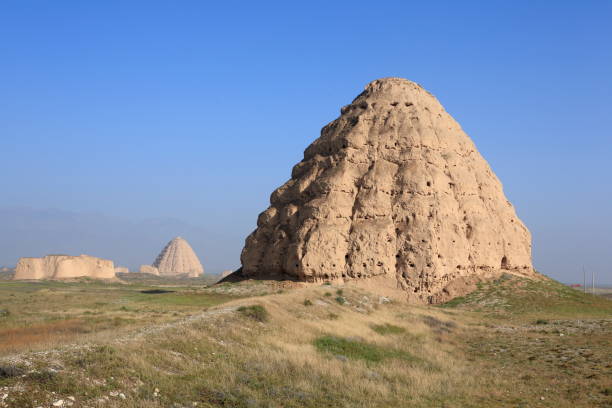
Xiongjiazhong Tomb Site.
In addition to its legendary status, the site is closely associated with the rich lore of the Chu State, known for its profound influence on early Chinese philosophy, poetry, and governance. The Chu Ci, a collection of poems from this region, illustrates the spiritual and cultural life of the Chu people, emphasizing their connection to nature and the divine.
Architectural Marvel
The tombs at Xiongjiazhong are notable not only for their artifacts but also for their intricate architectural designs. The layout of the tombs reflects the cosmological beliefs of the time, with careful attention to orientation and symbolism. The structures often mimic palatial designs, indicating the high status of their occupants. As you explore the site, you will encounter burial mounds that rise majestically from the landscape, each telling its own story of power and prestige.
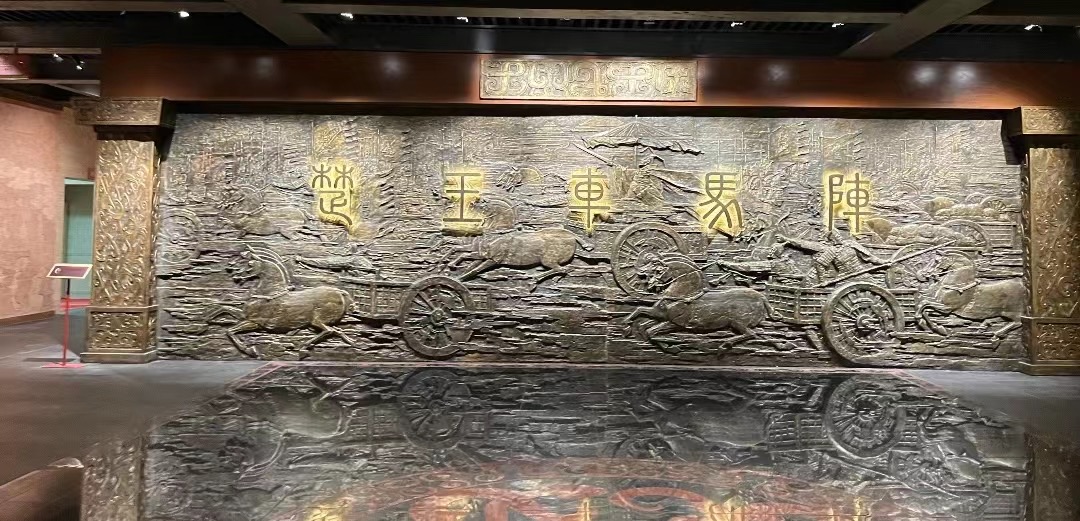
Xiongjiazhong Tomb Site.
Conclusion
Visiting the Xiongjiazhong Tomb Site is not merely an excursion into the past; it is an invitation to engage with the legends and cultural narratives that have shaped Chinese history. As you wander through the remnants of this ancient cemetery, you will gain a deeper appreciation for the artistry, spirituality, and social structures that defined the Chu State. This site serves as a testament to the enduring legacy of one of China’s most influential cultures and offers travelers a unique glimpse into the complexities of ancient Chinese civilization.
For those seeking to delve into the heart of Chinese history and culture, the Xiongjiazhong Tomb Site is an essential destination that promises to inspire and enlighten.
Main Highlights: What You Absolutely Can’t Miss
Discovering the Xiongjiazhong Tomb Site: Essential Highlights
When venturing to the Xiongjiazhong Tomb Site (熊家冢墓地), located northwest of the ancient capital of Chu in Jingzhou, Hubei Province, history enthusiasts and cultural explorers alike will find a wealth of fascinating attractions that unveil the rich heritage of the Chu State during the Eastern Zhou Dynasty. Here are the main highlights you absolutely cannot miss:
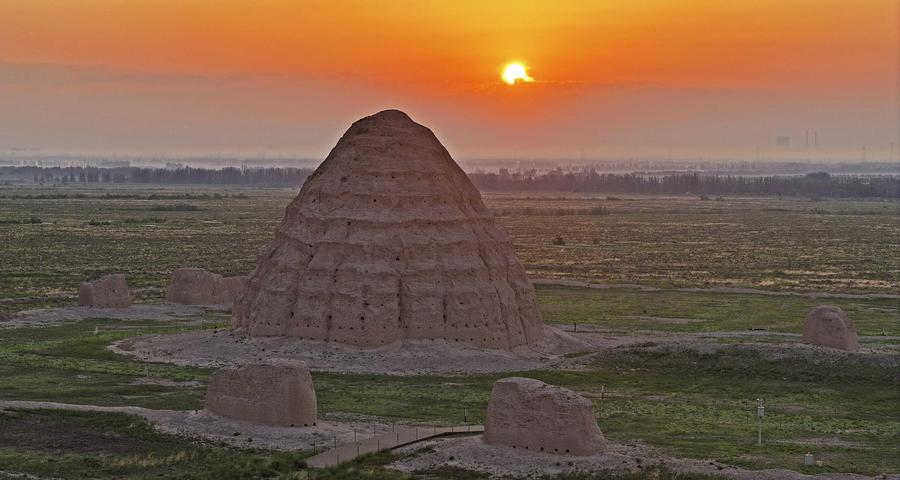
Xiongjiazhong Tomb Site.
1. Xiongjiazhong Relic Site Museum
- Overview: This museum is dedicated to the preservation and exhibition of the Xiongjiazhong tombs, offering an insightful glimpse into the burial practices of the high-ranking aristocracy of the Chu State.
- What to See: The museum houses numerous artifacts unearthed from the tomb, including exquisite silk fabrics, pottery, and bronze items that exemplify the artistic prowess of the period.
- Visiting Hours: Open daily from 8:30 AM to 5:00 PM (5:30 PM during daylight saving time).
2. The Tombs Themselves
- Historical Significance: The Xiongjiazhong site is recognized as a high-ranking cemetery, showcasing the grandeur of Chu culture during the Spring and Autumn Period and the Warring States Period.
- Remarkable Features: The tombs feature intricate burial designs and are surrounded by a wealth of historical relics, giving visitors a vivid sense of the funerary customs and social hierarchy of ancient China.

Xiongjiazhong Tomb Site.
3. Exquisite Artifacts
- Silk and Textiles: Don’t miss the beautifully preserved silk items found in the tombs, which date back to the late Warring States Period. Their intricate designs reflect the advanced textile techniques of the time.
- Ceramic Figures: Marvel at the ceramic figures that were buried alongside the elite, showcasing the artistic craftsmanship and cultural significance of these items in the afterlife beliefs of the Chu people.
4. Guided Tours and Audio Guides
- Enhanced Experience: To deepen your understanding of the site, consider renting audio guides or joining a guided tour. These resources provide detailed explanations of the artifacts and the historical context of the tombs, enriching your visit.
5. Cultural Context: The Ancient Capital of Chu
- Nearby Attractions: Extend your exploration by visiting the ancient capital of Chu, located just 45 kilometers away in Jingzhou. The well-preserved ancient city walls and historical architecture provide additional insights into the region’s storied past.
- Historical Significance: Jingzhou is one of China’s first historical and cultural cities, with a rich history dating back over 2,800 years, making it an essential stop for anyone interested in understanding the broader context of the Xiongjiazhong site.
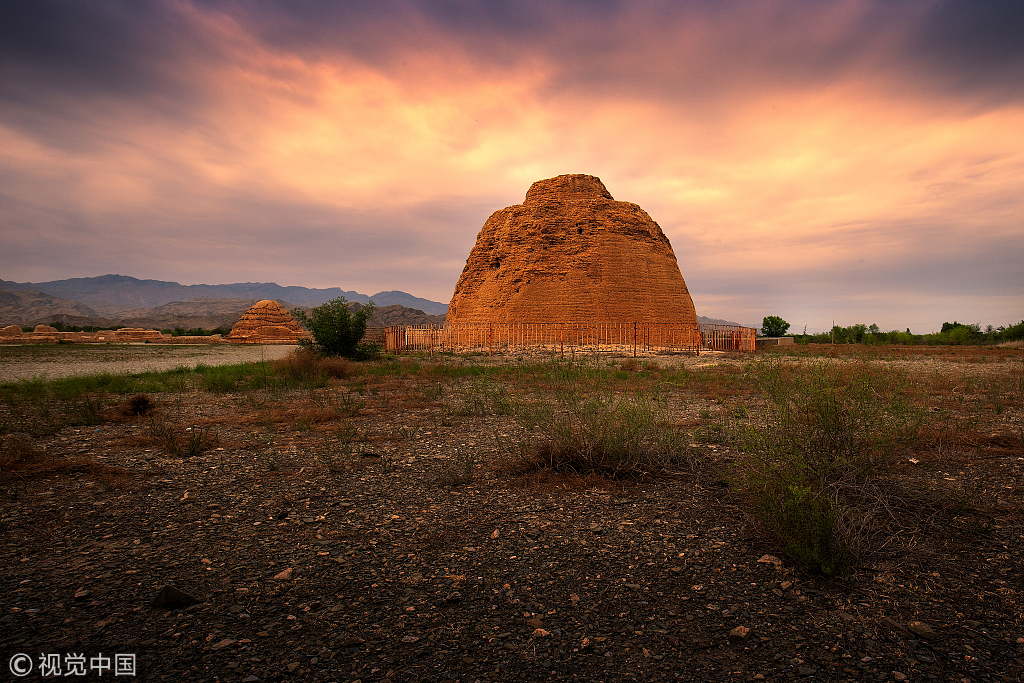
Xiongjiazhong Tomb Site.
6. Recommended Duration
- Plan Your Visit: Allocate at least 2-3 hours to fully appreciate the Xiongjiazhong Relic Site Museum and its surrounding tombs. This timeframe allows for a leisurely exploration of the exhibits and ample time to soak in the historical atmosphere.
7. Accessibility
- Getting There: The site is conveniently located in Jingzhou, with multiple bus routes available for easy access. It’s advisable to check local schedules for the best options to reach the museum and tomb site.
Visiting the Xiongjiazhong Tomb Site is not just an opportunity to witness ancient burial practices; it’s an invitation to connect with the rich tapestry of Chinese history and culture that continues to influence modern society. Don’t miss this chance to step back in time and explore the legacies of the Chu State.

Xiongjiazhong Tomb Site.
Planning Your Visit: A Practical Guide
Your Essential Guide to Visiting the Xiongjiazhong Tomb Site
If you are an international traveler intrigued by Chinese history and culture, a visit to the Xiongjiazhong Tomb Site (熊家冢墓地) in Jingzhou, Hubei Province, promises a profound journey into the rich tapestry of the Chu State’s past. This guide provides practical information to enhance your visit to this remarkable archaeological site and museum.
Location and Getting There
The Xiongjiazhong Tomb Site is situated approximately 45 kilometers northwest of Jingzhou, near the ancient capital of the Chu State. To reach the site from downtown Jingzhou, you have several convenient options:
- Public Transportation: You can take Bus Routes 1, 5, 10, 14, 19, or 26 to designated stops near the site. Buses are frequent and provide an economical way to travel.
- Taxi: For a more direct route, consider taking a taxi, which can be arranged easily in the city.
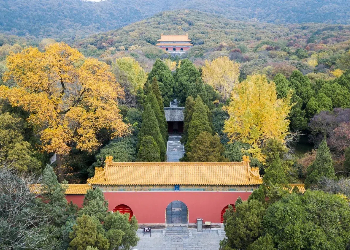
Xiongjiazhong Tomb Site.
Opening Hours
The Xiongjiazhong Relic Site Museum operates under the following hours:
- Standard Time: 8:30 AM – 5:00 PM
- Daylight Saving Time: 8:30 AM – 5:30 PM
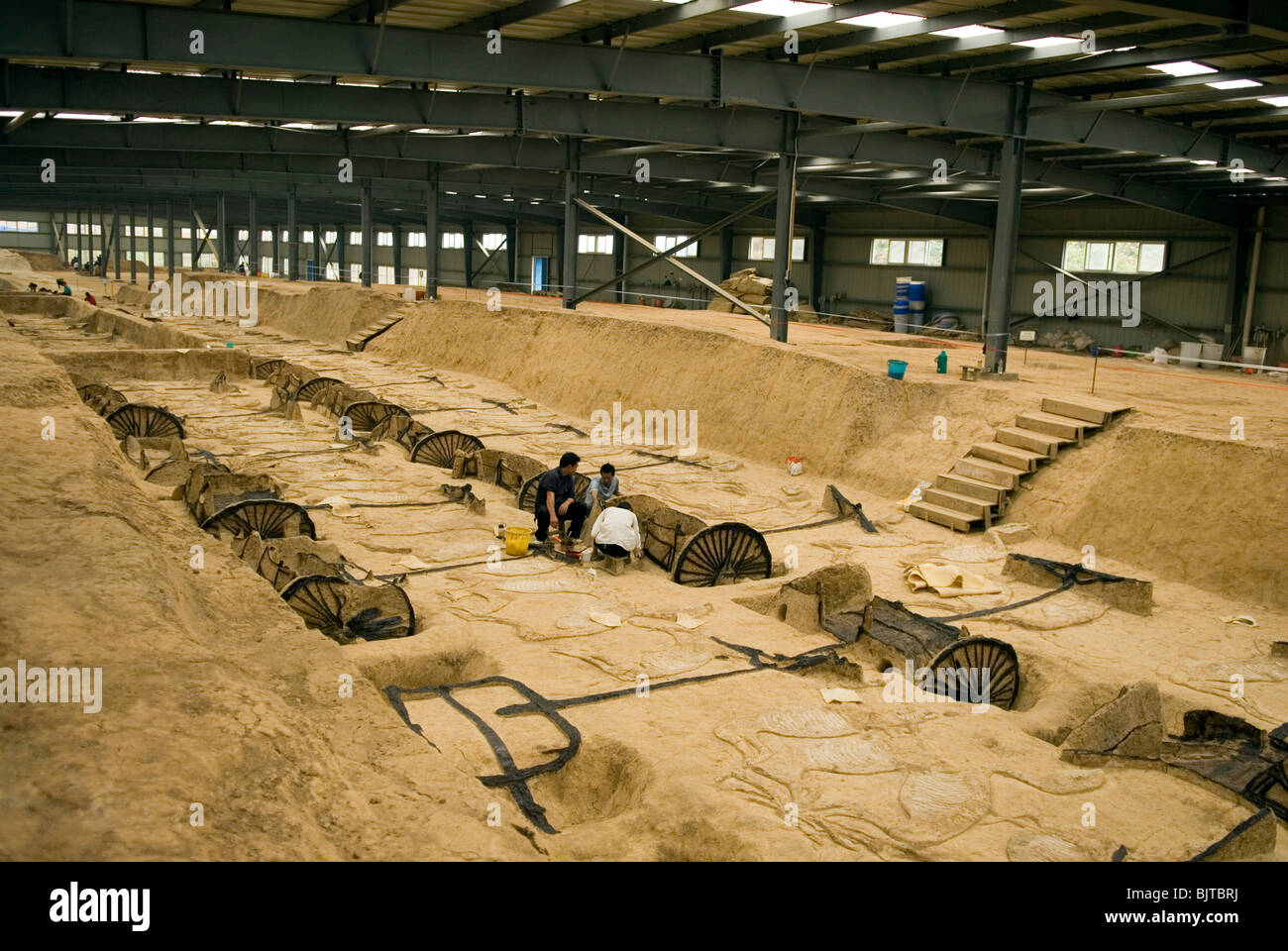
Xiongjiazhong Tomb Site.
It’s advisable to check local schedules as these hours may vary slightly depending on the season.
Admission Fees
Entry to the museum is generally affordable, and ticket prices can vary. It’s best to confirm the current rates through local sources or at the entrance. Keep an eye out for potential discounts or combined tickets if you plan to visit other attractions in Jingzhou.
Duration of Visit
Plan to spend 2 to 3 hours exploring the Xiongjiazhong site and museum. This timeframe allows you to appreciate the extensive exhibitions and the significant historical context of the tombs, which date back to the Eastern Zhou Dynasty.

Xiongjiazhong Tomb Site.
Highlights to Explore
-
Historical Significance: The Xiongjiazhong site is one of the most prominent aristocratic cemeteries of the Chu State, representing the high culture of the Spring and Autumn Period and the Warring States Period.
-
Exhibitions: Inside the museum, you’ll find collections of bronze artifacts, silk fabrics, pottery, and jade items unearthed from the tombs. Notably, the Exhibition of Jade Excavated in Xiongjiazhong Tomb showcases exquisite pieces that reflect the craftsmanship of the period.
-
Preserved Relics: One of the museum’s most astonishing displays includes the well-preserved remains of a man from the Western Han Dynasty, providing invaluable insights into ancient burial practices and the socio-political structure of the time.
Nearby Attractions
While in Jingzhou, consider exploring the following nearby sites to enrich your experience:
- Jingzhou Ancient City: A well-preserved historic area featuring ancient city walls, gates, and a vibrant cultural atmosphere.
- Jingzhou Museum: Home to over 130,000 relics, this museum provides a deeper understanding of the region’s archaeological significance.
- Light and Shadow Show at the Ancient City: Experience a captivating nighttime display that brings the history of Jingzhou to life through visuals and storytelling.
Tips for Your Visit
- Photography: Be sure to bring your camera, as the site and museum offer numerous opportunities for stunning photographs.
- Guided Tours: Consider renting audio guides or joining a guided tour to gain deeper insights into the exhibits and their historical contexts.
- Local Cuisine: Don’t miss the chance to try local Hubei dishes in nearby restaurants, enriching your cultural experience.
Visiting the Xiongjiazhong Tomb Site is not just a journey through history; it’s an exploration of the cultural heritage that shaped ancient China. As you walk through the remnants of the past, you’ll leave with a deeper appreciation of the profound legacy of the Chu State. Enjoy your adventure!
Tickets: Prices, Booking, and Tips
Visiting the Xiongjiazhong Tomb Site: Ticket Information and Tips
Planning a visit to the Xiongjiazhong Tomb Site (熊家冢墓地) is an exciting journey into the rich tapestry of Chinese history, particularly that of the Chu State during the Eastern Zhou Dynasty. This ancient site, renowned for its archaeological significance, offers a glimpse into the lives and customs of a bygone era. Here’s everything you need to know about tickets, booking, and valuable tips for your visit.
Ticket Prices
- General Admission: Approximately RMB 30 per person.
- Discounted Tickets: Reduced prices may be available for students and seniors, so be sure to inquire at the ticket counter.
- Free Entry: Children under a certain age (usually under 6 years) may enjoy free admission, but it’s advisable to confirm this at the time of your visit.
Opening Hours
- Standard Time: 8:30 AM – 5:00 PM
- Daylight Saving Time: 8:30 AM – 5:30 PM
- Closed: Check for any specific holidays when the site may be closed to visitors.
Booking Your Tickets
- On-Site Purchase: Tickets can be purchased at the entrance of the museum. However, during peak tourist seasons, it is recommended to arrive early to secure your entry.
- Online Booking: Some travel platforms may offer the option to book tickets in advance. This can save time and ensure availability, especially on weekends and holidays.
- Group Discounts: If you are visiting with a group, inquire about possible discounts for larger parties, which could enhance your experience at this historical site.
Recommended Visit Duration
Plan to spend about 2-3 hours exploring the Xiongjiazhong Tomb Site. This timeframe allows ample opportunity to appreciate the various exhibitions and the significance of the artifacts on display, including jade items and other relics from the Chu State.
Tips for a Memorable Visit
- Audio Guides: Consider renting an audio guide to enrich your understanding of the site’s historical context. These guides often provide detailed explanations of the exhibits and their significance.
- Photography: While photography is usually permitted, be mindful of any restrictions in specific areas. Capture the stunning relics and the beautiful surrounding landscape.
- Dress Comfortably: Wear comfortable shoes, as you will likely be doing a fair amount of walking. The site encompasses both indoor and outdoor areas.
- Plan for Weather: Since the site may have outdoor elements, check the weather forecast and dress accordingly. Sunscreen and hats are advisable for sunny days, while umbrellas may come in handy during the rainy season.
- Combine Your Visit: After exploring the tomb site, consider visiting the nearby Jingzhou Museum, which houses an extensive collection of artifacts and provides further insights into the region’s rich cultural heritage.
By planning ahead and following these tips, your visit to the Xiongjiazhong Tomb Site will not only be educational but also a delightful experience steeped in the historical essence of ancient China. Enjoy your journey back in time!
How to Get There: A Complete Transportation Guide
Navigating to Xiongjiazhong Tomb Site
Visiting the Xiongjiazhong Tomb Site (熊家冢墓地) is a journey into the heart of Chinese history, located near the ancient city of Jingzhou in Hubei Province. This significant archaeological site, known for its high-level aristocratic cemetery from the Chu State, is easily accessible through various modes of transportation. Here’s how you can make your way there seamlessly.
Reaching Jingzhou
By Air
– Closest Airport: The nearest major airport is Jingzhou Liuji Airport (JIU), approximately 30 kilometers from downtown Jingzhou.
– Connecting Flights: This airport has connections to major cities like Shanghai and Beijing. Upon arrival, you can take a taxi or a shuttle bus to Jingzhou city center.
By Train
– High-Speed Rail: Jingzhou is well-connected via China’s extensive high-speed rail network. You can take a train from cities such as Wuhan (around 1.5 hours), Changsha, or Nanjing.
– Train Station: Arrive at Jingzhou Railway Station, which is just a short taxi ride from the city center and offers local transportation options.
By Bus
– Long-Distance Buses: Buses to Jingzhou depart from several cities in Hubei Province. The main bus terminal is located in the city center, making it convenient for transfers to local transport.
Getting to Xiongjiazhong Tomb Site
Once in Jingzhou, the Xiongjiazhong Tomb Site is located approximately 45 kilometers northwest of the city center. Here’s how to get there:
By Taxi
– The most straightforward way is to take a taxi directly from your accommodation in Jingzhou to the tomb site. The journey takes about 1 hour, and the fare will typically range from CNY 100 to CNY 150 depending on traffic. Ensure that the driver uses the meter.
By Public Transportation
– Bus: There are bus routes available that connect Jingzhou to the tomb site. You can take Bus 101 or Bus 26 towards the Xiongjiazhong area. Confirm the route with locals or your hotel for the most current information.
– Bus Stops: Look for stops labeled for Xiongjiazhong or ask the bus driver to alert you when you reach your destination.
Guided Tours
– If you prefer a more structured visit, consider joining a guided tour that includes transportation. Many travel agencies in Jingzhou offer day trips to the Xiongjiazhong site, often combining it with other cultural attractions in the area.
Visiting Hours and Tips
- Opening Hours: The Xiongjiazhong Relic Site Museum is open from 8:30 AM to 5:00 PM (extended to 5:30 PM during daylight saving time). Plan your visit accordingly.
- Recommended Time: Allocate 2 to 3 hours for your visit to fully appreciate the site and its exhibits.
- Facilities: The museum offers rental equipment for audio guides, which can enhance your experience with detailed insights into the relics on display.
Exploring the Xiongjiazhong Tomb Site is not just a visit to an archaeological site; it’s an immersion into the rich tapestry of Chinese history and culture. With this transportation guide, you’re well-equipped to embark on this fascinating journey.
Local Cuisine and Accommodation Nearby
When visiting the Xiongjiazhong Tomb Site in Jingzhou, Hubei Province, not only will you delve deep into the rich tapestry of Chinese history, but you will also have the opportunity to savor the local cuisine and find comfortable accommodations nearby. This ancient site, renowned for its significance during the Spring and Autumn Period as a high-level aristocratic cemetery of the Chu State, is surrounded by a variety of dining and lodging options that will enhance your cultural experience.
Local Cuisine
1. Jingzhou Cuisine: A Culinary Journey
Jingzhou is celebrated for its diverse culinary offerings, blending traditional flavors with regional specialties. Here are a few must-try dishes:
-
Wonton Noodles (云吞面): Delicate dumplings filled with minced pork or shrimp, served in a fragrant broth. This dish is a staple in local eateries and a perfect light meal after exploring the tomb site.
-
Stewed Fish (红烧鱼): Freshwater fish, often caught from local rivers, stewed in a savory sauce. The use of local herbs and spices gives it a distinctive taste that reflects the region’s culinary heritage.
-
Cold Noodles (凉面): A refreshing dish ideal for warmer days, featuring thin noodles tossed with sesame sauce, garlic, and a sprinkle of chili oil. This dish is particularly popular among locals and makes for a delightful summer meal.
-
Jingzhou Duck (荆州鸭): Known for its succulent meat and crispy skin, this dish is often marinated with a unique blend of spices, providing a burst of flavor that is both rich and satisfying.
2. Recommended Restaurants Near the Tomb Site
-
Xiangyun Restaurant (香云餐厅): Located just a short drive from the tomb site, this eatery offers a range of local dishes, including their renowned stewed fish. The ambiance is cozy, making it a pleasant spot to unwind after a day of exploration.
-
Jingzhou Taste (荆州味道): Known for its authentic Jingzhou cuisine, this restaurant is a favorite among locals. Their wonton noodles and cold noodles are highly recommended, and the staff can assist with English menus.
-
Qinghe Restaurant (清和餐厅): This establishment specializes in Hubei dishes and is particularly famous for its Jingzhou duck. The restaurant’s decor pays homage to traditional Chinese aesthetics, enhancing your dining experience.
Accommodation Nearby
1. Comfortable Stays
After a day of immersing yourself in the history of the Xiongjiazhong Tomb Site, you’ll want a restful place to recharge. Here are some excellent accommodation options:
-
Jingzhou Jinling Hotel (荆州金陵大酒店): Located centrally, this hotel offers modern amenities and comfortable rooms. It’s a great base for exploring both the tomb site and the ancient city, featuring an on-site restaurant that serves both local and international cuisine.
-
Jingzhou Huaihe Hotel (荆州淮河大酒店): This hotel is known for its friendly service and convenient location, just a short distance from the museum. With spacious rooms and complimentary breakfast, it’s ideal for travelers looking for comfort.
-
Hanting Express Jingzhou (汉庭酒店): A budget-friendly option, this hotel provides clean and simple accommodations. Its proximity to public transport makes it easy to explore the surrounding area, including the ancient city.
-
Jingzhou Ancient City International Youth Hostel (荆州古城国际青年旅舍): Perfect for backpackers and those seeking a more communal atmosphere, this hostel offers dormitory and private rooms. Engage with fellow travelers and share stories about your adventures in Jingzhou.
Conclusion
As you plan your visit to the Xiongjiazhong Tomb Site, consider indulging in the local cuisine and choosing accommodations that reflect the warmth and hospitality of Jingzhou. Whether you’re enjoying a plate of wonton noodles or resting at a comfortable hotel, your experience will be enriched by the flavors and comforts of this historic region.
Frequently Asked Questions
Frequently Asked Questions About Xiongjiazhong Tomb Site
1. What is the Xiongjiazhong Tomb Site?
The Xiongjiazhong Tomb Site, located in Jingzhou, Hubei Province, is an archaeological site that dates back to the Eastern Zhou Dynasty. It is recognized as one of the most significant high-ranking aristocratic cemeteries from the Chu State, showcasing the cultural richness of the region during the Spring and Autumn and Warring States periods.
2. What are the opening hours of the Xiongjiazhong Relic Site Museum?
The museum is open from 8:30 AM to 5:00 PM during standard time and until 5:30 PM during daylight saving time. It is advisable to check if there are any special closures before planning your visit.
3. How much time should I plan to spend at the site?
Visitors typically spend 2 to 3 hours exploring the Xiongjiazhong Relic Site Museum and its surrounding areas. This duration allows ample time to appreciate the exhibits and learn about the historical significance of the site.
4. How can I get to the Xiongjiazhong Tomb Site?
The site is accessible from downtown Jingzhou. You can take various bus routes, including Routes 1, 15, 19, 33, 34, and others, to nearby stops such as 五医站 or 市妇幼保健院站. Alternatively, taxis and ride-hailing services are available for a more direct route.
5. Are there guided tours available?
Yes, the museum offers guided tours and audio guides for rental, which provide detailed explanations of the exhibits and the historical context of the tomb site. These resources can greatly enhance your understanding and enjoyment of the visit.
6. What are some must-see features within the museum?
Noteworthy highlights include the ancient relics from the Chu State, particularly the jade excavated from the Xiongjiazhong Tomb, as well as the exceptionally preserved artifacts from the Western Han Dynasty. The museum’s collection illustrates the artistic and cultural advancements of the period.
7. Is there an entrance fee to visit the museum?
While specific ticket prices may vary, it is advisable to check the latest information online or contact the museum directly for current admission fees. Generally, entrance fees are quite reasonable, considering the historical significance of the site.
8. What should I prepare before visiting?
Visitors are encouraged to wear comfortable walking shoes, as the site involves walking and exploring. Bringing a camera is also recommended to capture the stunning artifacts and the serene environment. Additionally, it may be helpful to have a basic understanding of the Chu culture to fully appreciate the exhibits.
Final Thoughts on Your Trip
As you prepare to wrap up your journey through the remarkable Xiongjiazhong Tomb Site and its surrounding treasures, it’s essential to reflect on the profound connection you’ve forged with China’s rich cultural tapestry. Visiting this site is more than just a historical excursion; it’s a chance to step back in time and appreciate the artistry and sophistication of the Chu culture during the Eastern Zhou Dynasty.
A Journey Through Time
The Xiongjiazhong Tomb Site is a testament to the grandeur of the Chu State, showcasing an impressive collection of artifacts that reveal the intricacies of ancient life. As you wandered through the museum, surrounded by artifacts that have withstood the test of time, you likely felt the weight of history and the stories these relics tell.
Recommendations for Your Next Steps
- Explore Jingzhou: Don’t miss the chance to explore the ancient city of Jingzhou, where the well-preserved city walls and historic architecture create an enchanting atmosphere.
- Visit Jingzhou Museum: Just a short distance from the tomb site, the Jingzhou Museum houses an extensive collection of artifacts that further illuminate the region’s history. The preserved corpse from the Western Han Dynasty is a must-see, offering a striking glimpse into the past.
- Engage with Local Culture: Consider joining a local tour or attending a cultural performance in Jingzhou. Engaging with local traditions will deepen your appreciation for the region’s heritage.
Final Thoughts
Your visit to the Xiongjiazhong Tomb Site not only enriches your understanding of Chinese history but also allows you to connect with the resilience and creativity of a civilization that thrived over two millennia ago. As you leave, carry with you not just memories of ancient tombs and exquisite artifacts but also a sense of wonder at the enduring legacy of the Chu culture. This journey is a reminder that history is alive in the present, waiting to be explored and appreciated. Safe travels on your next adventure!